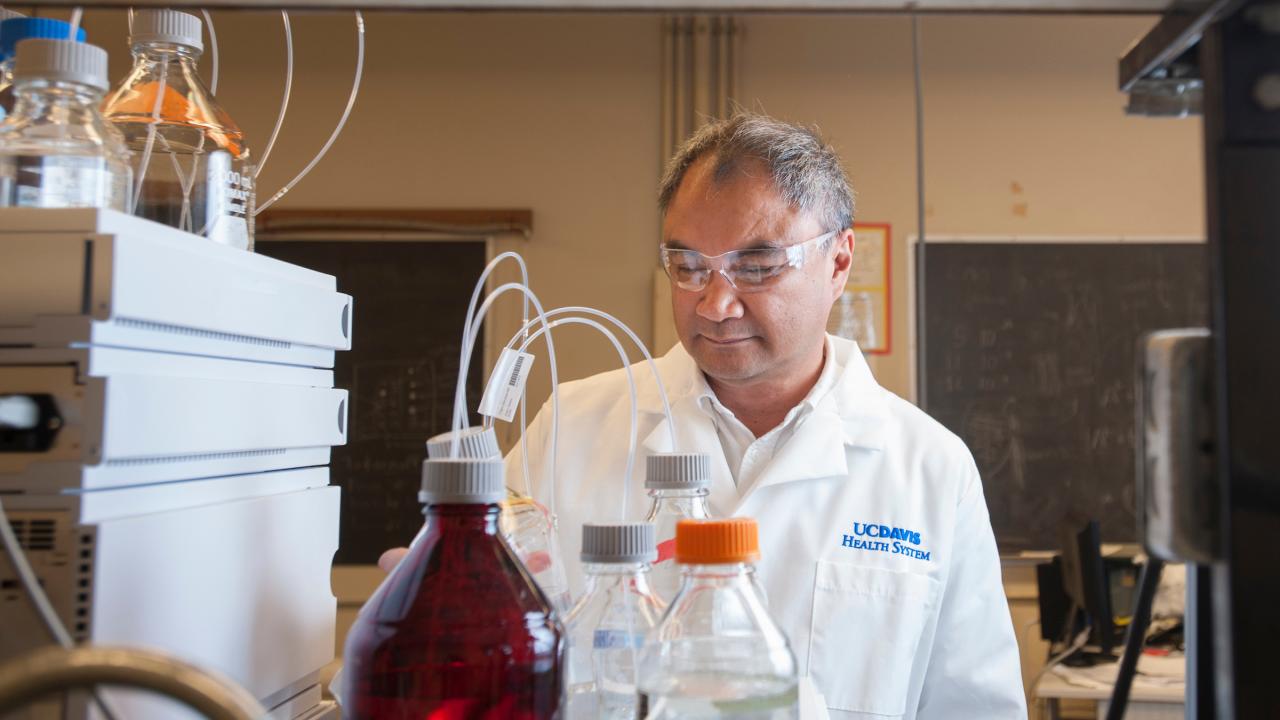We’ve all heard the advice: “Eat more fiber.”
But the reality behind that seemingly simple recommendation is much more complex when it comes to human health. While consumption of dietary fiber has been associated with decreased risks of obesity, type 2 diabetes, coronary heart disease and certain gastrointestinal disorders, honing in on how specific fibers — or more broadly, carbohydrates — from different foods affect the gut microbiome and thus human health remains a black box.
“We can talk proteins, we know fats, but carbohydrates, which are probably 70-80% of what we eat, are mainly unknown,” said Distinguished Professor Carlito Lebrilla, who holds joint appointments in the Department of Chemistry and Department of Biochemistry and Molecular Medicine at UC Davis. “So here we are in 2023, we think we know everything about diet and food, and yet the most important component of food is unknown.”
Lebrilla calls carbohydrates the “dark matter of food.” Their myriad molecular structures have remained mysterious for decades, but Lebrilla and a consortium of UC Davis scientists — including Professors David Mills and J. Bruce German, faculty affiliate Jenifer Smilowitz, and Associate Adjunct Professor Danielle LeMay — have developed methods to lift that veil. As part of a $3.7 million National Institutes of Health-funded project, they’re building a library of biomarkers associated with specific carbohydrate food sources as they pass through the gut. The goal is to build a comprehensive understanding of the structural diversity of carbohydrates and how those structures influence digestive health.
“This project started when we were identifying biomarkers from the point of view of mother’s milk,” Lebrilla said. “If mother’s milk has this fiber, what does adult fiber look like? And then we started to wonder, if we can characterize the fiber in mother’s milk, perhaps we can characterize the fiber in adult food. And then based on that, can we figure out what a healthy gut produces?”
Importance since infancy
It seems counterintuitive that an indigestible carbohydrate is a linchpin ingredient of mother’s milk, but that’s the case for human milk oligosaccharides.
“The third most abundant component of milk after proteins and fats are carbohydrates,” Lebrilla said. “Directly, it has no nutritional value to the infant. Instead, it feeds the gut microbiome.”
Using mass spectrometry-based analysis tools developed in-house, Lebrilla and his colleagues monitored how human milk oligosaccharides interact with infant gut bacteria. They discovered that the saccharides nourished a specific microbe, Bifidobacterium infantis. They also found that the products resulting from this interaction guide intestinal cell and microbial development, helping build immunity, regulate metabolism and spur neurogenesis.
But B. infantis is disappearing from the gut biota of American babies for a host of reasons, including antibiotic and formula usage. To remedy this issue, Lebrilla co-founded Evolve Biosystems, a company that produces probiotics meant to encourage a healthy digestive system in infants.
Currently, Lebrilla and colleagues are conducting studies to find the best transitory foods for weaning infants.
“The problem at the moment is mothers feed infants this incredible food and then we transition the infant’s gut to what? Rice porridge?” Lebrilla said. “We transition from a very complicated system of fiber … and somehow we may not be doing it correctly.”
A problem for infants, a problem for adults
Lebrilla and his colleagues aren’t solely focused on the problem of healthy carbohydrates in infant diets. They’re also focused on interventions to promote better carbohydrates in adult diets.
“There’s this concept of ‘stealth health,’ and that’s creating products that people don’t know are good for them,” Lebrilla said.
That’s why Lebrilla and colleagues founded Better Carbohydrate Design Bioscience, a company that explores new and diverse sources of carbohydrates, “mining their unique chemistry and developing innovative applications for health and nutrition.”
“We took the methods that we developed for analysis and now we’re using it to create fiber that you can put in drinks,” Lebrilla said. “So imagine getting a broccoli fiber in your Diet Coke, or in your lemonade, or in your Red Bull.”
“That’s the pie in the sky,” he added. “Can we give you fiber in an easier-to-digest and easier-to-manipulate form?”
Lebrilla lauded the UC Davis campus for being a fertile environment for interdisciplinary research. Collaborators on his carbohydrate project include chemists, microbiologists, food scientists and clinicians.
“Everyone is bringing together a set of skills that one group alone could not possibly have,” he said. “That’s always been the uniqueness of UC Davis for scientists.”
Media Resources
Stopping superbugs with friendly microbes
Greg Watry is a writer with the UC Davis College of Letters and Science.
